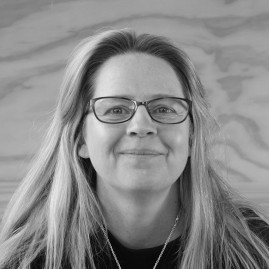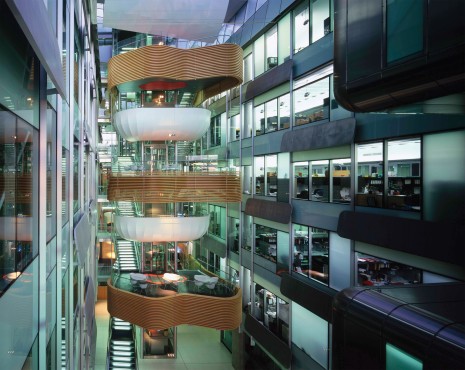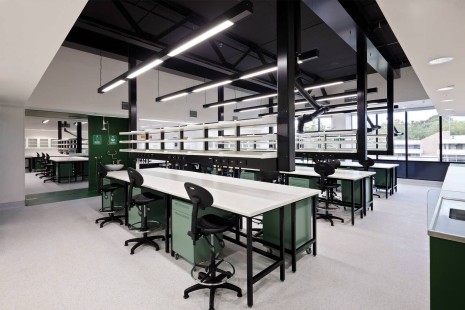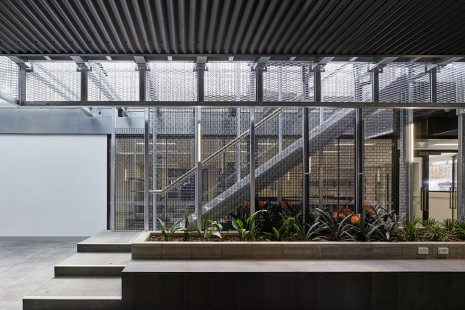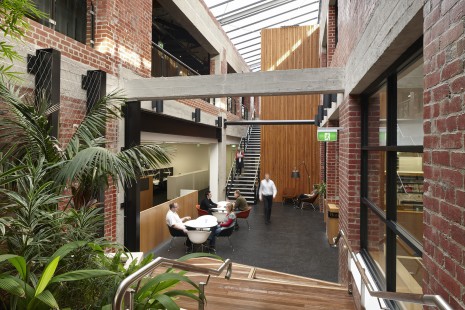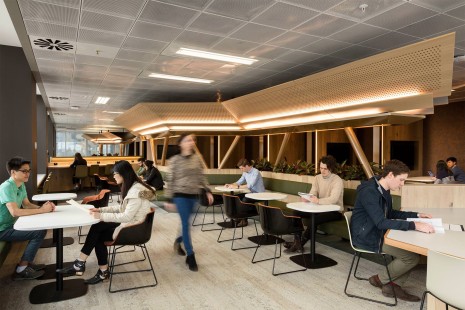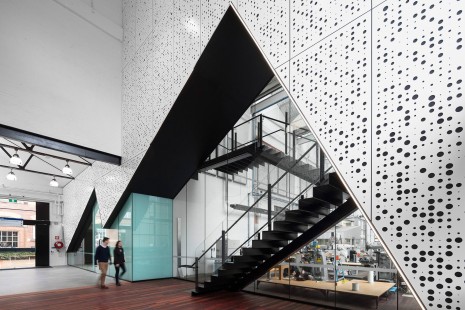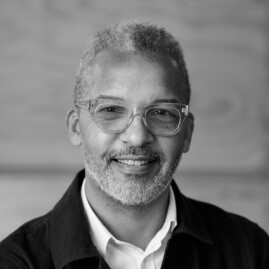
Christon Smith
VIC Architect Registration No. 16069
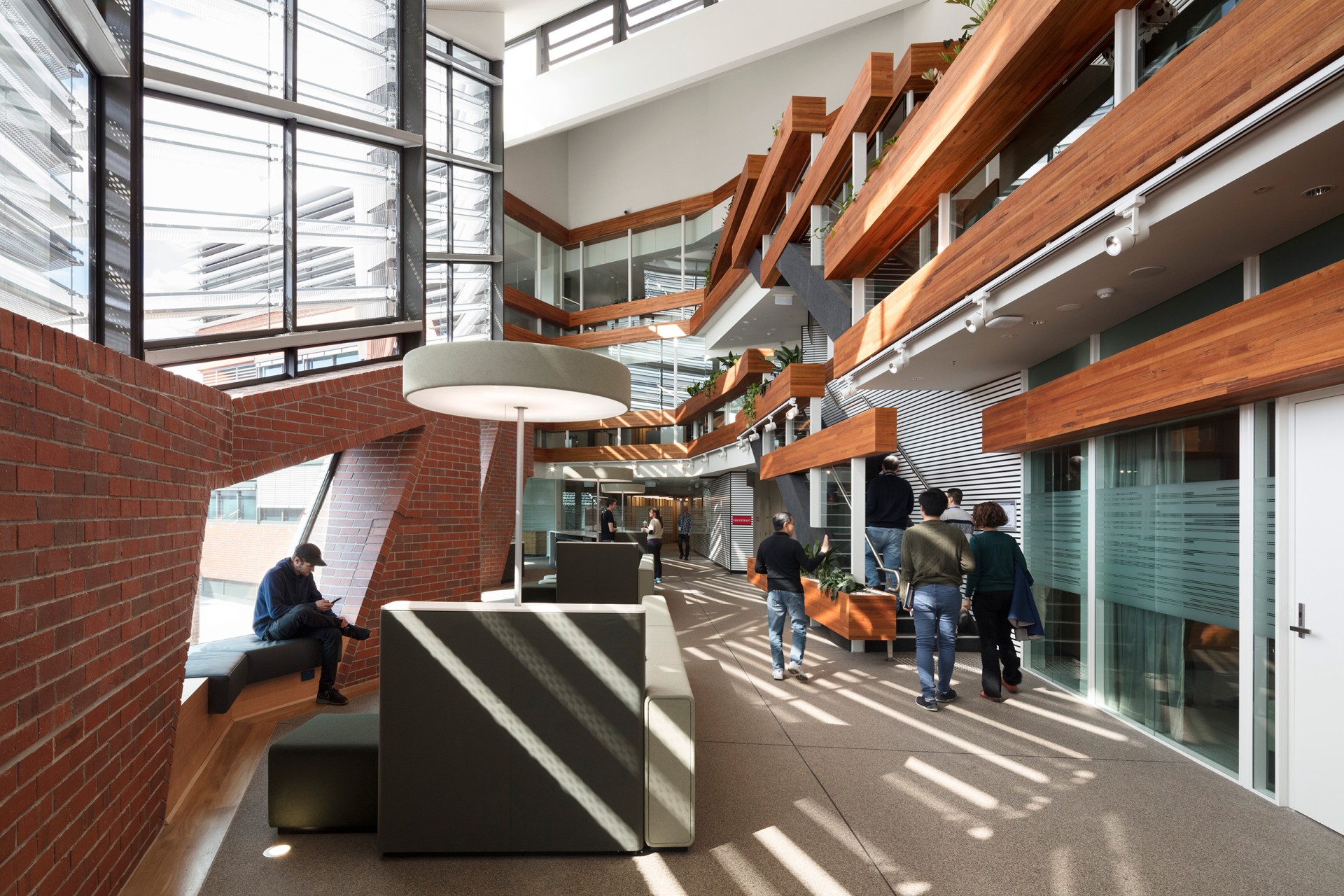
This new building combines state-of-the-art PC2 and clean room research laboratories with workspaces and collaborative shared spaces to expand on the Bio21 Institute’s engagement with multidisciplinary research, training and industry. This approach supports the Institute’s unique ‘school to bench to workplace’ vision. Co-tenants, CSL Research share the facility as home of their Global Hub for Research and Translational Medicine.
Thinking about scientific research begs the question: What is the essential quality a research building should have? The answer – a sense of discovery. The constrained, almost hidden character of the site provided an ideal opportunity to express that experience of discovery by creating a journey through space and nature.
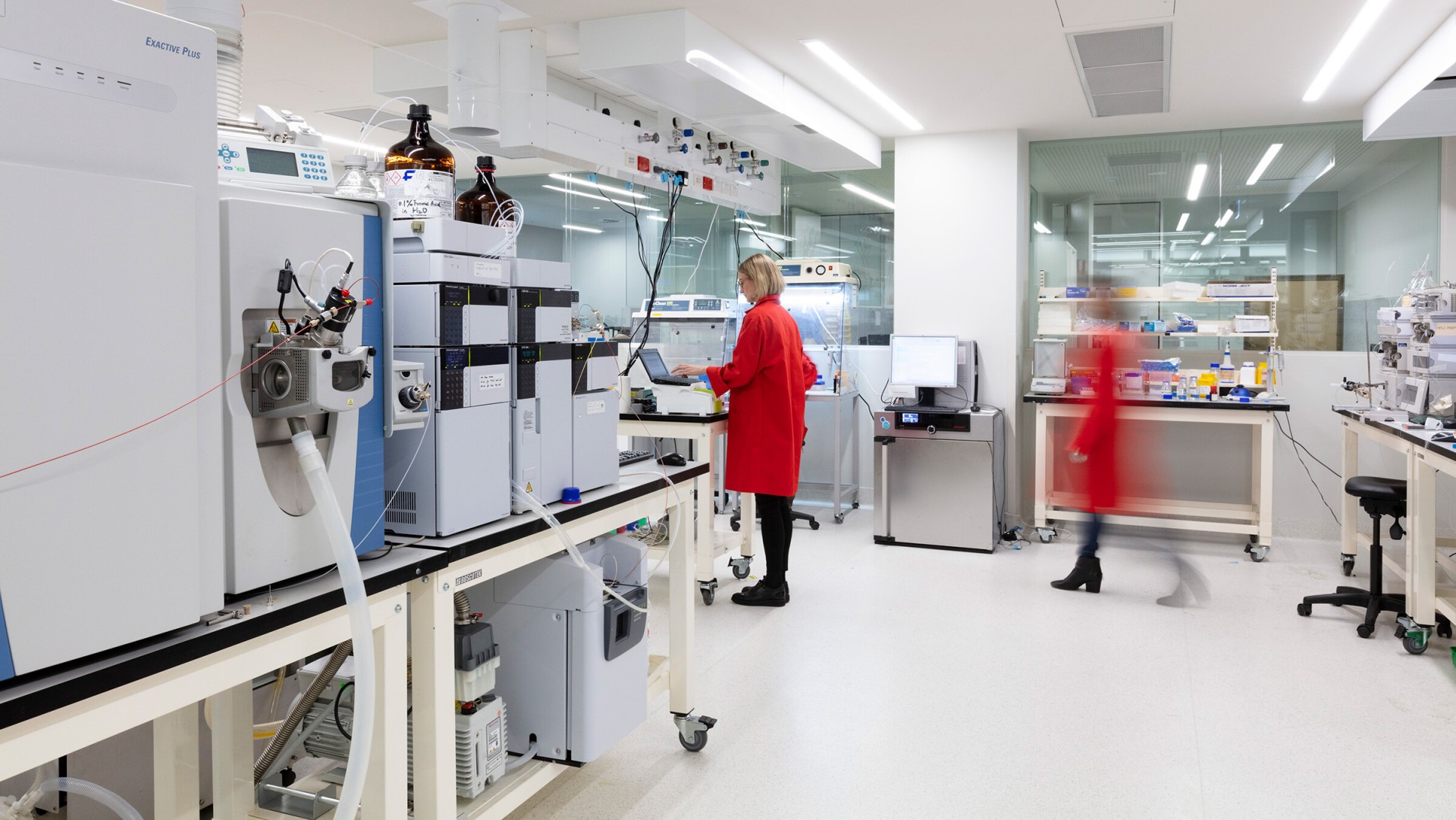
The journey begins through a sequence of landscaped courtyards into a multi-level, light-filled collaboration forum, rich with biophilic experiences. Like a clearing in a forest, the forum provides a natural focus to the building. It opens to reveal a tall, tapering volume framed by natural materials and textures. Accessible from multiple directions, the forum connects directly to Bio21 David Penington and is the primary shared space for formal and informal meetings, breakout, circulation and collaboration.
Our overall concept emphasises the benefits of a connection with nature to wellbeing by clearly articulating a design that integrates natural light, airflow, greenery and views to the outdoors.
Christon Smith
Director, DesignInc Melbourne
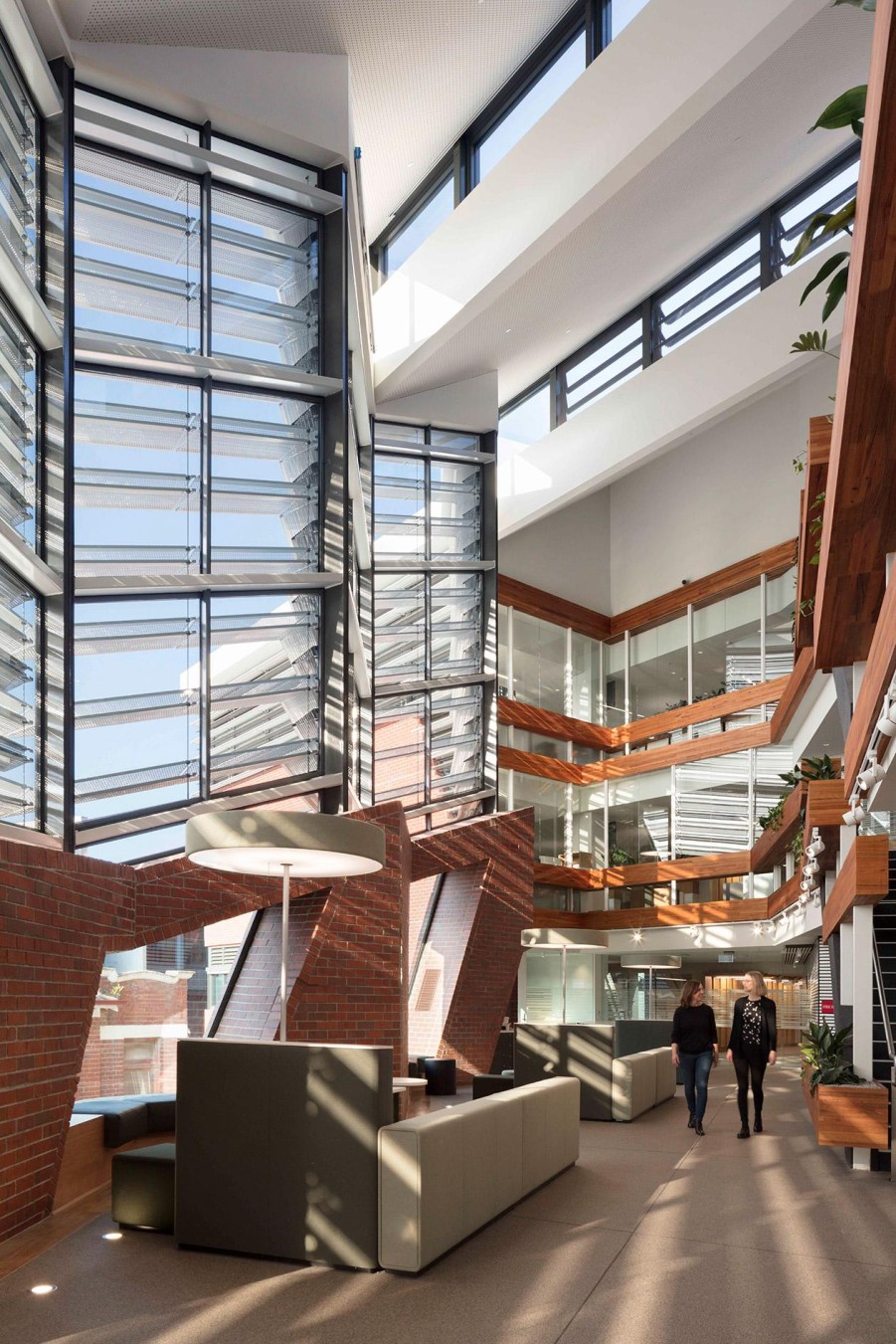
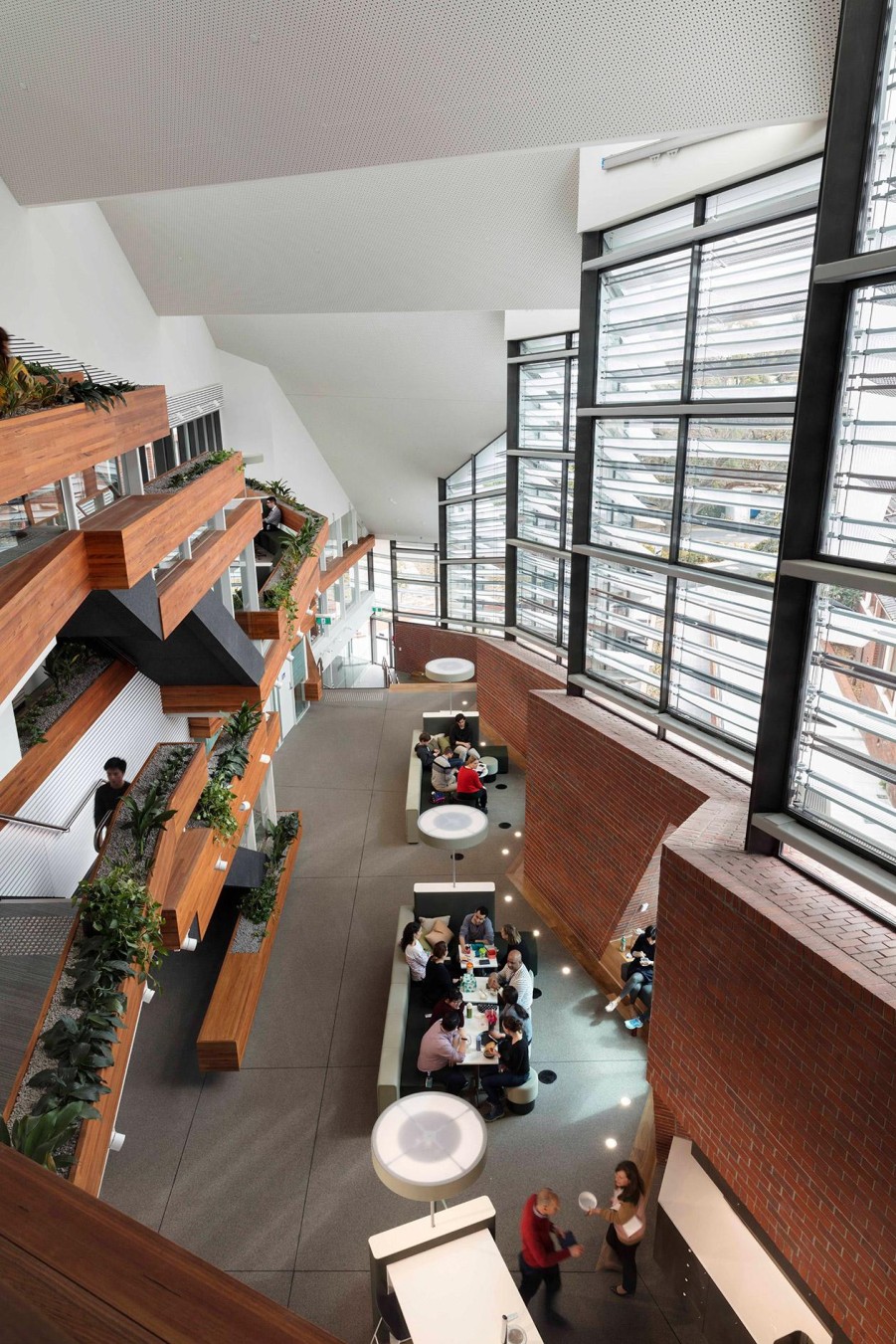
Landscaped timber planters weave at the southern edge, sieving light and views into the space. Meeting rooms, breakout spaces, terraces and stepped platforms provide flexible opportunities for individual retreat or collaborative interaction. Above, a rising cascade of perforated ceiling planes float between angled skylights, reflecting and directing natural light deep into the space.
The four-storey, flexible lab–office building borrows the natural amenity of the forum and benefits from its thermal buffer. The interconnecting levels and volumes of the building simulate the mystery of nature. As in any journey, elements are slowly revealed – some never fully in view – creating a sense of anticipation and discovery to inspire a new generation of scientists and sustain Australian biotechnology and life sciences research.
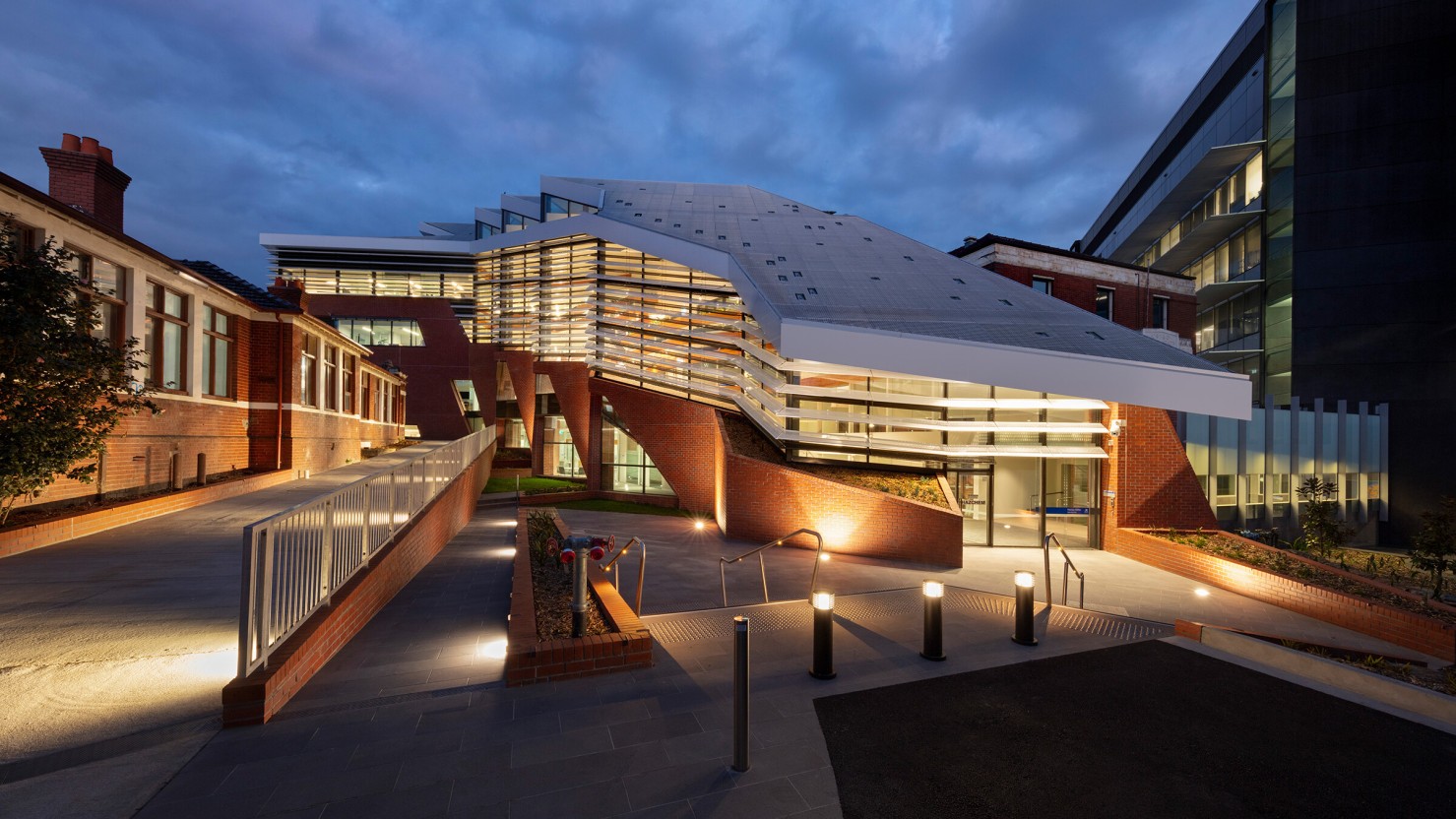

VIC Architect Registration No. 16069
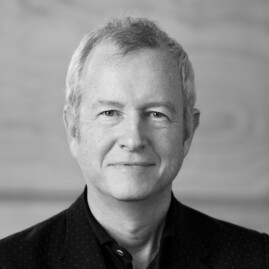
VIC Architect Registration No. 15145
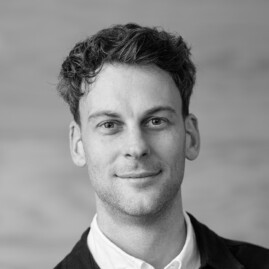
VIC Architect Registration No. 18162
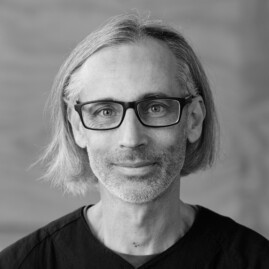
VIC Architect Registration No. 15654

VIC Architect Registration No. 17730
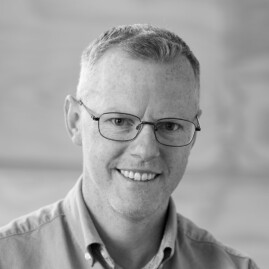
VIC Architect Registration No. 17959
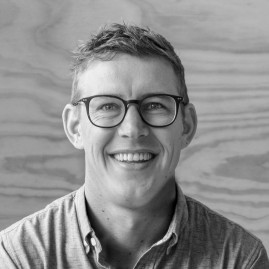
VIC Architect Registration No. 18513
